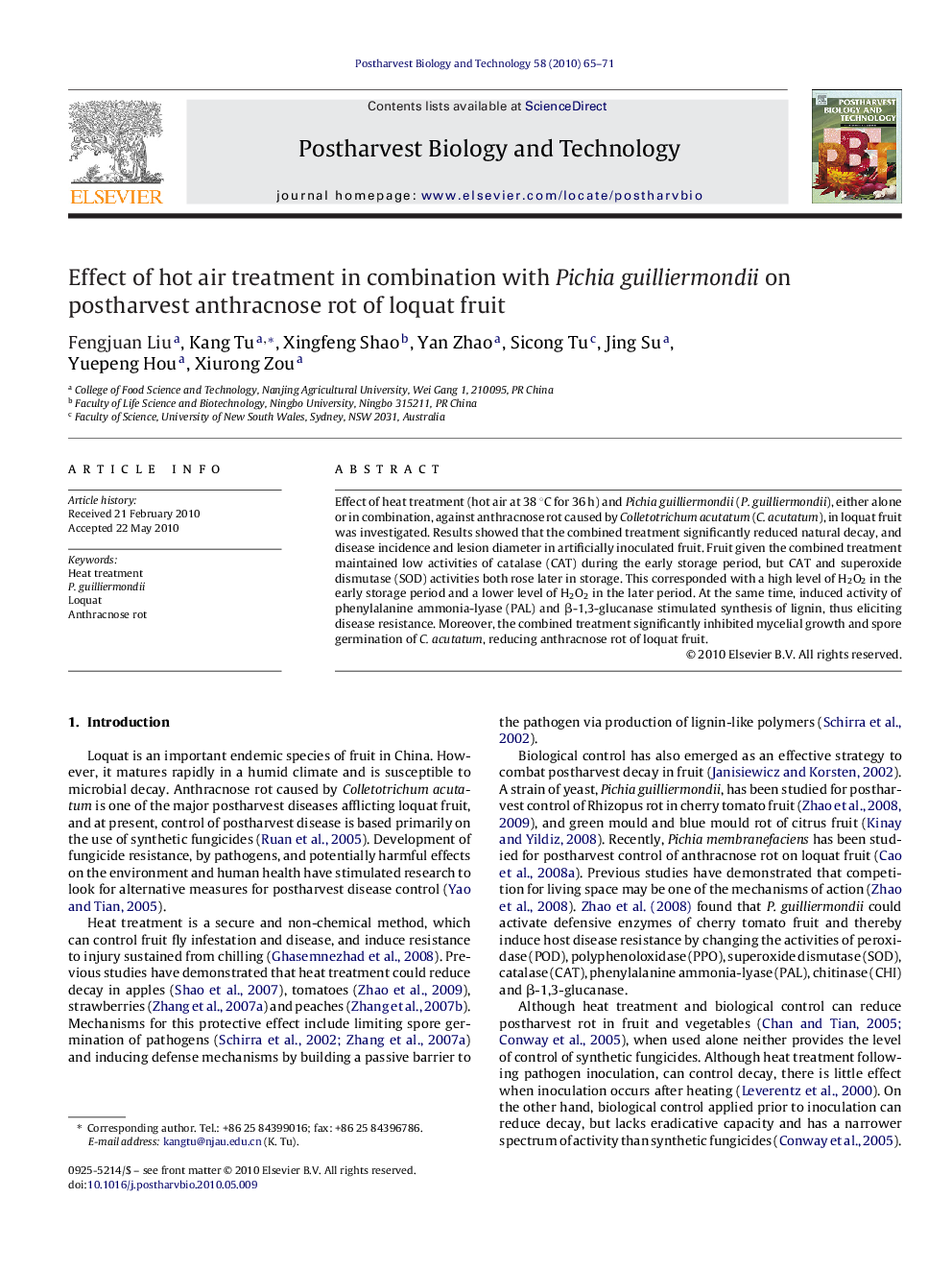| Article ID | Journal | Published Year | Pages | File Type |
|---|---|---|---|---|
| 4519015 | Postharvest Biology and Technology | 2010 | 7 Pages |
Effect of heat treatment (hot air at 38 °C for 36 h) and Pichia guilliermondii (P. guilliermondii), either alone or in combination, against anthracnose rot caused by Colletotrichum acutatum (C. acutatum), in loquat fruit was investigated. Results showed that the combined treatment significantly reduced natural decay, and disease incidence and lesion diameter in artificially inoculated fruit. Fruit given the combined treatment maintained low activities of catalase (CAT) during the early storage period, but CAT and superoxide dismutase (SOD) activities both rose later in storage. This corresponded with a high level of H2O2 in the early storage period and a lower level of H2O2 in the later period. At the same time, induced activity of phenylalanine ammonia-lyase (PAL) and β-1,3-glucanase stimulated synthesis of lignin, thus eliciting disease resistance. Moreover, the combined treatment significantly inhibited mycelial growth and spore germination of C. acutatum, reducing anthracnose rot of loquat fruit.
